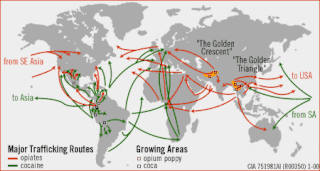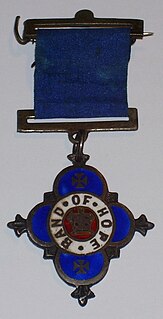External links
| Look up COCA in Wiktionary, the free dictionary. |
- Official website
- "Conference on Crack and Cocaine COCA, registered charity no. 1097073". Charity Commission for England and Wales.
It is proposed that this article be deleted because of the following concern:
If you can address this concern by improving, copyediting, sourcing, renaming, or merging the page, please edit this page and do so. You may remove this message if you improve the article or otherwise object to deletion for any reason. Although not required, you are encouraged to explain why you object to the deletion, either in your edit summary or on the talk page. If this template is removed, do not replace it . The article may be deleted if this message remains in place for seven days, i.e., after 08:35, 29 August 2021 (UTC). |
COCA is a charity in the United Kingdom providing information on stimulant drug use.
Conference On Crack and Cocaine is the UK's leading charity supporting drug professionals and organisations with the issues relating to stimulant drugs such as crack, cocaine, amphetamine, methamphetamine and MDMA (ecstasy).
COCA provides specialist training for professionals who come into contact with people using crack and cocaine and other stimulants.
The training ranges from basic awareness of the issues surrounding problematic use, to developing competencies in group and key working sessions. COCA's courses are Drug and Alcohol National Occupational Standards (DANOS) compliant.
COCA has trained staff from small and large voluntary agencies including CRi, Cranstoun Drug Services, Turning Point and Addaction as well as statutory organisations such as National Offender Management Service in England and the Prison Service in Scotland, Drug Action Teams, the National Probation Service and the police service. COCA's courses have been delivered to GP's and are PGEA approved by the Royal College of General Practitioners.
| Look up COCA in Wiktionary, the free dictionary. |

Cocaine is a tropane alkaloid and stimulant drug obtained primarily from the leaves of two coca species, Erythroxylum coca and Erythroxylum novogranatense. It is most commonly used as a recreational drug and euphoriant. After extraction from coca leaves, cocaine may be snorted, heated until sublimated and then inhaled, or dissolved and injected into a vein. Mental effects may include an intense feeling of happiness, sexual arousal, loss of contact with reality, or agitation. Physical symptoms may include a fast heart rate, sweating, and dilated pupils. High doses can result in high blood pressure or body temperature. Effects begin within seconds to minutes of use and last between five and ninety minutes.

The Harrison Narcotics Tax Act was a United States federal law that regulated and taxed the production, importation, and distribution of opiates and coca products. The act was proposed by Representative Francis Burton Harrison of New York and was approved on December 17, 1914.

Recreational drug use is the use of a psychoactive drug to induce an altered state of consciousness either for pleasure or for some other casual purpose or pastime by modifying the perceptions, feelings, and emotions of the user. When a psychoactive drug enters the user's body, it induces an intoxicating effect. Generally, recreational drugs are divided into three categories: depressants ; stimulants ; and hallucinogens.

The term narcotic originally referred medically to any psychoactive compound with numbing or paralysing properties. In the United States, it has since become associated with opiates and opioids, commonly morphine and heroin, as well as derivatives of many of the compounds found within raw opium latex. The primary three are morphine, codeine, and thebaine.

Coca is any of the four cultivated plants in the family Erythroxylaceae, native to western South America. Coca is known for its psychoactive alkaloid, cocaine.

Stimulants is an overarching term that covers many drugs including those that increase activity of the central nervous system and the body, drugs that are pleasurable and invigorating, or drugs that have sympathomimetic effects. Stimulants are widely used throughout the world as prescription medicines as well as without a prescription as performance-enhancing or recreational drugs. Among narcotics, stimulants produce a noticeable crash or comedown at the end of their effects. The most frequently prescribed stimulants as of 2013 were lisdexamfetamine, methylphenidate (Ritalin), and amphetamine. It was estimated in 2015 that the percentage of the world population that had used cocaine during a year was 0.4%. For the category "amphetamines and prescription stimulants" the value was 0.7%, and for Ecstasy 0.4%.

Club drugs, also called rave drugs, or party drugs are a loosely defined category of recreational drugs which are associated with discothèques in the 1970s and nightclubs, dance clubs, electronic dance music (EDM) parties, and raves in the 1980s to today. Unlike many other categories, such as opiates and benzodiazepines, which are established according to pharmaceutical or chemical properties, club drugs are a "category of convenience", in which drugs are included due to the locations they are consumed and/or where the user goes while under the influence of the drugs. Club drugs are generally used by adolescents and young adults. This group of drugs is also called "designer drugs", as most are synthesized in a chemical lab rather than being sourced from plants or opiates.

The war on drugs is a global campaign, led by the U.S. federal government, of drug prohibition, military aid, and military intervention, with the aim of reducing the illegal drug trade in the United States. The initiative includes a set of drug policies that are intended to discourage the production, distribution, and consumption of psychoactive drugs that the participating governments and the UN have made illegal. The term was popularized by the media shortly after a press conference given on June 18, 1971, by President Richard Nixon—the day after publication of a special message from President Nixon to the Congress on Drug Abuse Prevention and Control—during which he declared drug abuse "public enemy number one". That message to the Congress included text about devoting more federal resources to the "prevention of new addicts, and the rehabilitation of those who are addicted", but that part did not receive the same public attention as the term "war on drugs". However, two years prior to this, Nixon had formally declared a "war on drugs" that would be directed toward eradication, interdiction, and incarceration. In 2015, the Drug Policy Alliance, which advocates for an end to the War on Drugs, estimated that the United States spends $51 billion annually on these initiatives, and in 2021, after 50 years of the drug war, others have estimated that the US has spent a cumulative $1 trillion on it.

Sympathomimetic drugs are stimulant compounds which mimic the effects of endogenous agonists of the sympathetic nervous system. The primary endogenous agonists of the sympathetic nervous system are the catecholamines, which function as both neurotransmitters and hormones. Sympathomimetic drugs are used to treat cardiac arrest and low blood pressure, or even delay premature labor, among other things.

Hope UK is a United Kingdom Christian charity based in London, England which educates children and young people about drug and alcohol abuse. It was founded in 1855 as the Band of Hope.
Drugs and prostitution have been documented to have a direct correlation.

Coca tea, also called mate de coca, is an herbal tea (infusion) made using the raw or dried leaves of the coca plant, which is native to South America. It is made either by submerging the coca leaf or dipping a tea bag in hot water. The tea is most commonly consumed in the Andes mountain range, particularly Argentina, Bolivia, Colombia, Ecuador and especially in Peru, where it is consumed all around the country. It is greenish yellow in color and has a mild bitter flavor similar to green tea with a more organic sweetness.
Transform Drug Policy Foundation (Transform) is a registered non-profit charity based in the United Kingdom working in drug policy reform. As an independent think tank, Transform works to promote public health, social justice and human rights through drug policy reform, seeking to achieve these goals through the legal regulation of the production, supply and use of drugs.
Coca paste is a crude extract of the coca leaf which contains 40% to 91% cocaine sulfate along with companion coca alkaloids and varying quantities of benzoic acid, methanol, and kerosene. In South America, coca paste, also known as cocaine base and, therefore, often confused with cocaine freebase in North America, is relatively inexpensive and is widely used by low-income populations. The coca paste is smoked in tobacco or cannabis cigarettes and use has become widespread in several Latin American countries. Traditionally, coca paste has been relatively abundant in South American countries such as Colombia where it is processed into cocaine hydrochloride for distribution to the rest of the world. The caustic reactions associated with the local application of coca paste prevents its use by oral, intranasal, mucosal, intramuscular, intravenous or subcutaneous routes. Coca paste can only be smoked when combined with a combustible material such as tobacco or cannabis.

Troparil is a stimulant drug used in scientific research. Troparil is a phenyltropane-based dopamine reuptake inhibitor (DRI) that is derived from methylecgonidine. Troparil is a few times more potent than cocaine as a dopamine reuptake inhibitor, but is less potent as a serotonin reuptake inhibitor, and has a duration spanning a few times longer, since the phenyl ring is directly connected to the tropane ring through a non-hydrolyzable carbon-carbon bond. The lack of an ester linkage removes the local anesthetic action from the drug, so troparil is a pure stimulant. This change in activity also makes troparil slightly less cardiotoxic than cocaine. The most commonly used form of troparil is the tartrate salt, but the hydrochloride and naphthalenedisulfonate salts are also available, as well as the free base.
Coca may refer to any of the four cultivated plants which belong to the family Erythroxylaceae.

Tropane alkaloids are a class of bicyclic [3.2.1] alkaloids and secondary metabolites that contain a tropane ring in their chemical structure. Tropane alkaloids occur naturally in many members of the plant family Solanaceae. Certain tropane alkaloids such as cocaine and scopolamine are both notorious for their psychoactive effects, related usage and cultural associations. Particular tropane alkaloids such as these have pharmacological properties and can act as anticholinergics or stimulants.

Crack cocaine, commonly known simply as crack, and also known as rock, is a free base form of cocaine that can be smoked. Crack offers a short, intense high to smokers. The Manual of Adolescent Substance Abuse Treatment calls it the most addictive form of cocaine. A crack addict is known as a "crackhead".
Organized crime in Peru refers to the transnational, national, and local groupings of highly centralized enterprises run by criminals who engage in illegal activity in the country, including drug trafficking organizations, terrorism, and attempted murder.
Maritime cocaine smuggling refers to the practice which involves the smuggling of cocaine between borders via maritime means. According to the United Nations Office on Drugs and Crime (UNODC), there are an estimated 18 million users of cocaine globally. Approximately 70-80% of cocaine is at some point smuggled across the ocean, originating from South America. Cocaine remains the "highest value criminal commodity for transnational organised crime", motivating the criminal organisations responsible for maritime smuggling practices. Maritime cocaine smuggling is therefore an ongoing international issue, as criminal organisations are finding new and innovative ways of smuggling cocaine and go undetected by authorities.